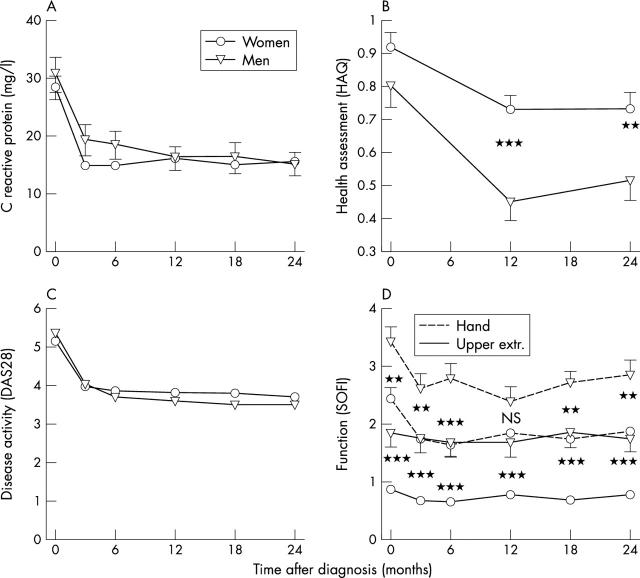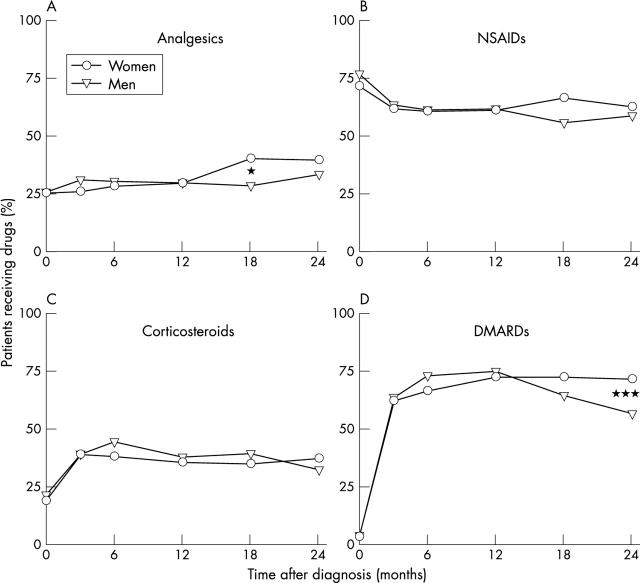Abstract
Methods: 284 patients with recent onset RA were followed up prospectively for two years from the time of diagnosis. Measures of disease activity (for example, 28 joint disease activity score (DAS28), C reactive protein, morning stiffness, physician's global assessment) and function outcome (for example, range of movement, hand function, walking time) were determined. The patients' self reported assessment of functional capacity (Health Assessment Questionnaire (HAQ)) and grading of wellbeing and pain (visual analogue scale) were registered. Changes over time and differences between men and women were evaluated.
Results: Improvements were seen for all variables within the first three months. Disease activity then remained unchanged. Function variables followed the same pattern during the first year, but then tended to worsen. HAQ scores were similar at baseline, but significantly worse in women than in men at the one and two year follow ups.
Conclusions: Disease activity was well managed and had improved substantially after two years, whereas function seemed slowly to deteriorate. Although disease variables were similar for men and women, functional ability (HAQ) had a less favourable course in women.
Full Text
The Full Text of this article is available as a PDF (137.6 KB).
Figure 1.
Variation in (A) CRP level, (B) HAQ score, (C) DAS28, and (D) hand/upper limb function (SOFI) over time in women and men. Bars represent SEM. *** p<0.001, **p<0.01.
Figure 2.
Variation in the percentage of patients receiving drug treatment with (A) analgesics, (B) NSAIDs, (C) corticosteroids, and (D) DMARDs at inclusion and follow up visits. *p<0.05, ***p<0.001.




